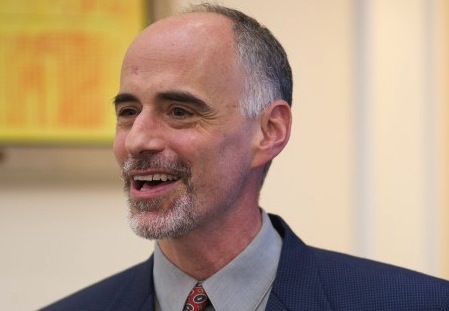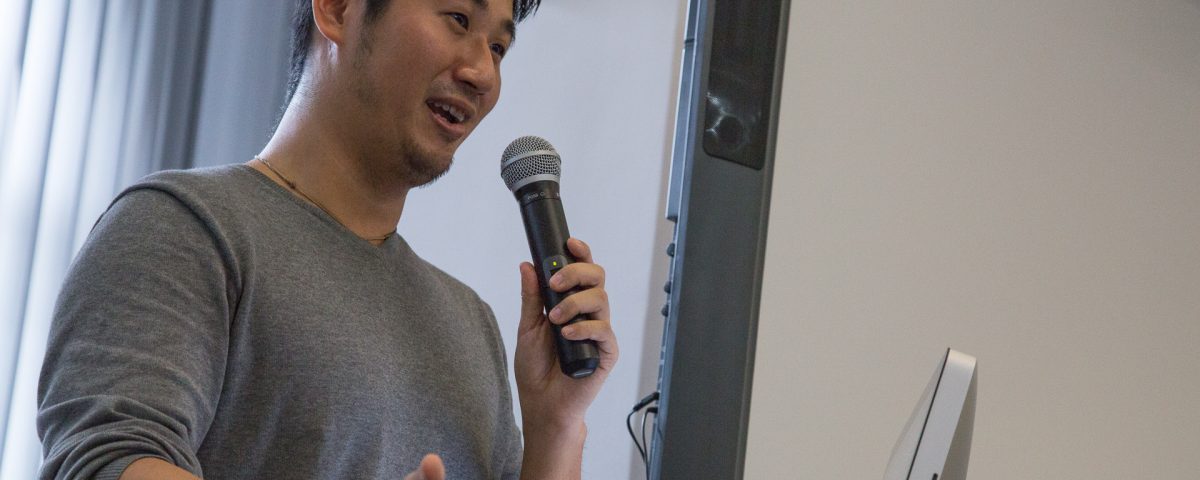
JMSC Students Pick Up 45 Scholarships at Annual Student Prize Presentation Ceremony
1 December 2012
Dec 7: Talk – What Leadership Changes in China mean for Media
4 December 2012Journalists in High Demand for Digital and Data Skills

Paul Cheung, the Global Interactive Editor for the Associated Press, speaking in the JMSC's Digital Media Lab.

Paul Cheung, the Global Interactive Editor for the Associated Press, speaking in the JMSC’s Digital Media Lab.
Journalists with skills in digital technology and data analysis are in high demand, and going to become more valuable in the future, according to the Associated Press’s Global Interactive Editor.
There is a growing trend in journalism toward work with data and numbers and visual information, says Paul Cheung, a former Senior Graphics Editor for the Wall Street Journal who now manages the AP’s multimedia and information graphics production team.
Cheung spoke to a full room at the JMSC’s Digital Media Lab at the University of Hong Kong on Wednesday, November 28th.
“Fast forward fifteen years and everything will be data driven”, said Cheung. “Journalists need to be able to look at data and understand it and interpret it, and then be able to visualize it and turn it into a story for the web”.
As a result, journalists with backgrounds in science and technology are highly marketable, but they are still difficult to find, he said. He noted that the AP has hired two JMSC graduates just in the past two years to help fill the gap.
Jonathan Stray (MJ, 2010) started working for the AP in 2010 as the Interactive Newsroom Technology Manager and created the AP’s Overview Project, a tool which helps journalists search document collections in order to find stories buried in large amounts of data. The project won the Knight Foundation News Challenge Prize for Digital Innovation in 2011.
Nathan Griffiths (MJ, 2011), who developed the JMSC iOS app for iPads and iPhones, is now an Interactive Producer at the AP and helped create the organization’s interactive election maps during the recent U.S. presidential election. The maps are the product of a special partnership between AP and Google and utilize a relatively new approach to online content called Responsive Web Design, which enables websites to be viewed across platforms and devices easily.
Modern journalists need to be equally versatile, said Cheung.
“Regardless of what platform they are using, journalists need to diversify their skills and understand how technology works”, he said.
“In addition to reporting, they have to be familiar with social media, to edit video, to be comfortable with programming and online producing”, said Cheung. “It’s important to be able to think ahead and anticipate the best way to tell a story in the different formats the audience will get it in”.
The JMSC recently started The Data Journalism Lab, a pilot project which explores the ways that technology, design and content intersect and interconnect.
“Journalism is an industry that is changing a lot”, said Tony Yoo, one of the three recipients of a Google-funded Data Journalism scholarship currently in the Master of Journalism programme. “Traditional jobs are disappearing while there are more and more new kinds of jobs that require a background in data and technology. I’m very lucky to be at the JMSC to be formally trained and learn how to combine those skills”.
Paul Cheung is an adjunct faculty member at Columbia Journalism School and incoming national President of the Asian-American Journalists Association. He is on Twitter at @pcheung630 and is a founding member of Our Chinatown, a hyperlocal news blog for New York City’s Chinatown community.
